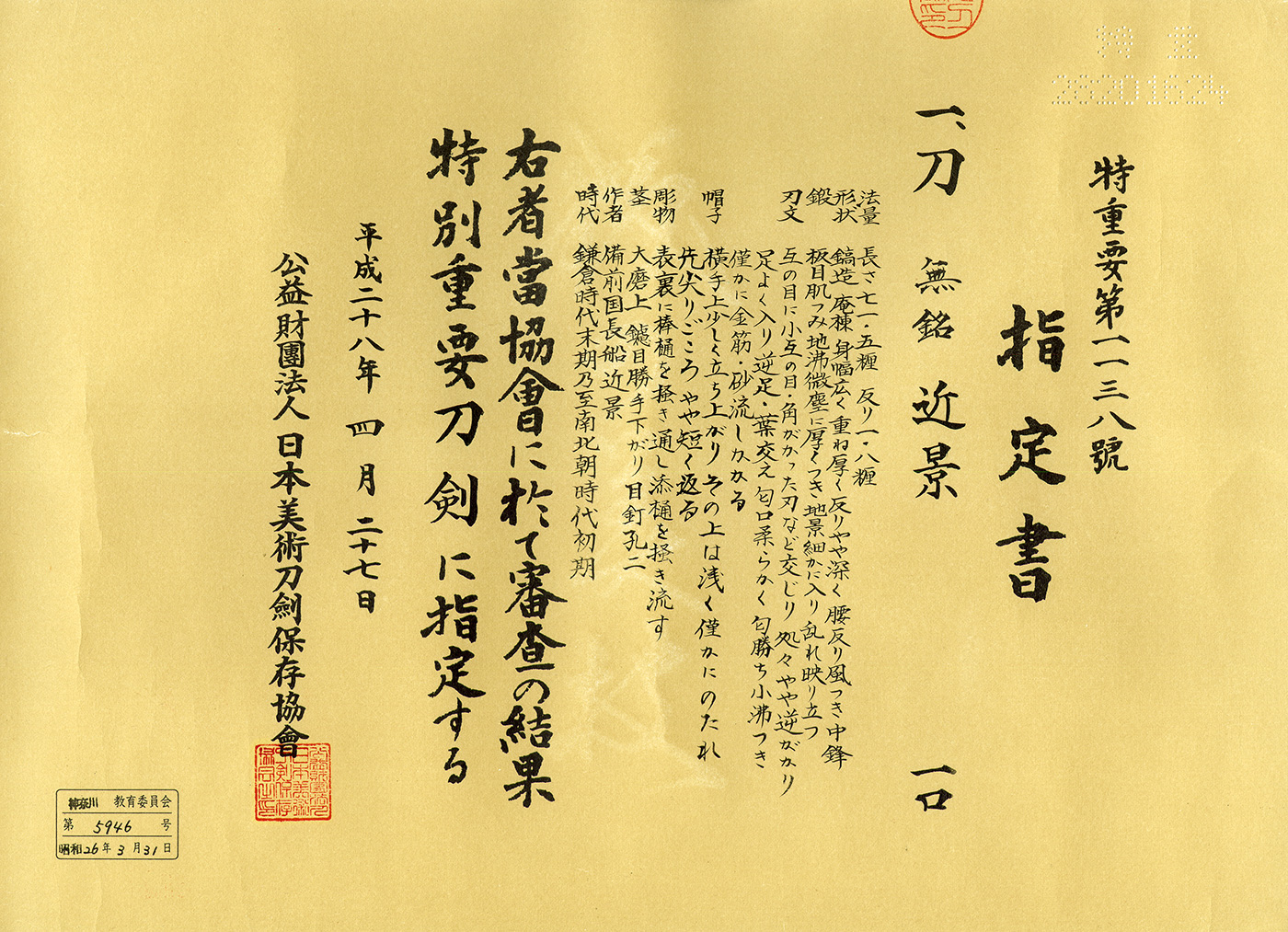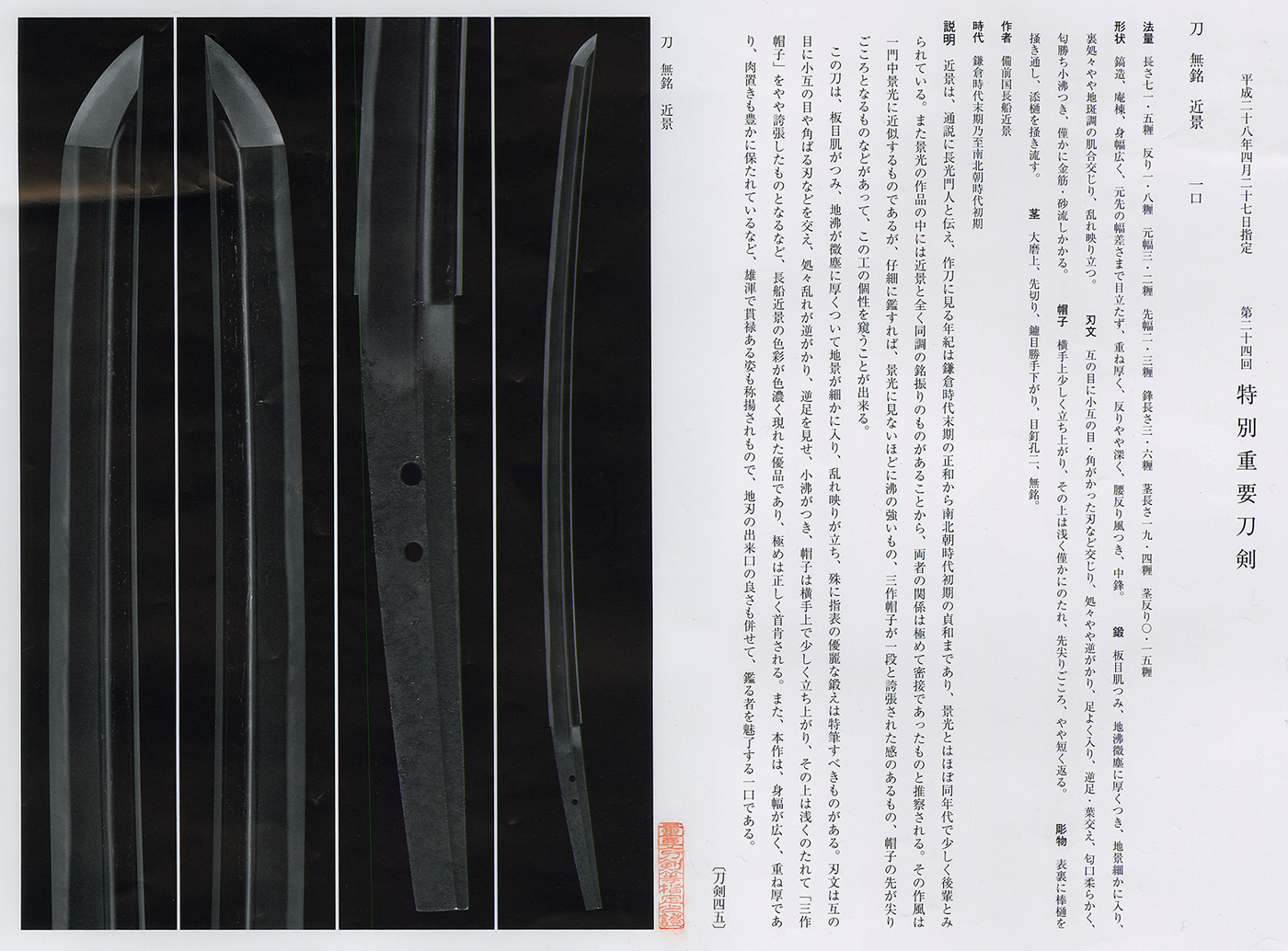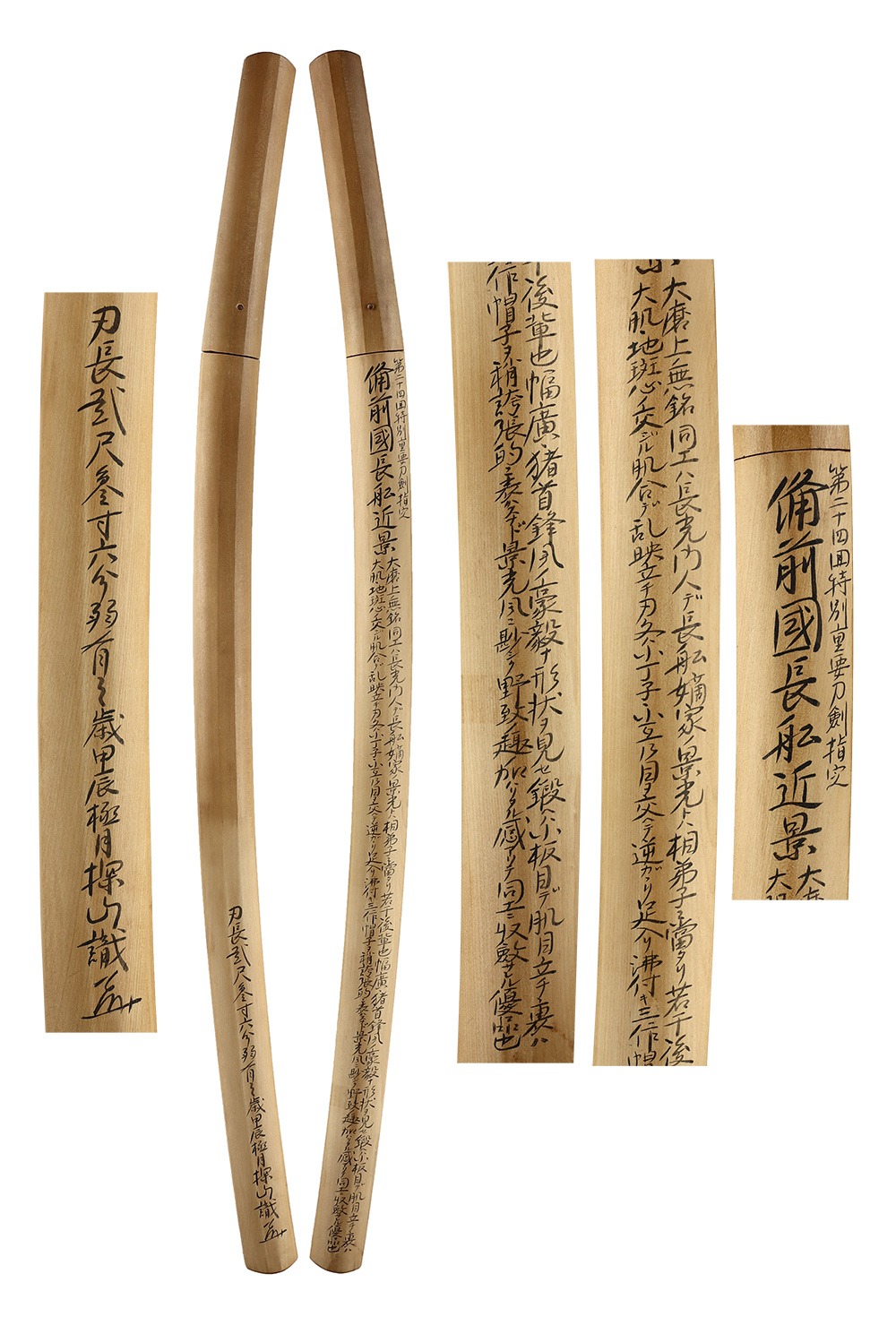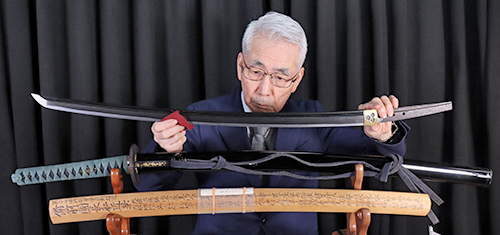Ordering number: AS25027
Katana in Shirasaya with Koshirae (24th NBTHK Tokubetsu Juyo Token)
Signature: Mumei (attributed to Chikakage)
無銘(近景)
Sayagaki: Written by Mr. Tanobe
Designated as the 24th Tokubetsu Juyo Token — Bizen Osafune Chikakage.
This is an o-suriage mumei blade.
Chikakage was a disciple of Nagamitsu and a fellow student with Kagemitsu of the Osafune mainline, being slightly junior.
This blade displays a magnificent shape with wide body and ikubi-kissaki style.
The forging is ko-itame with a well-defined grain.
The omote side shows prominent grain with a mix of ji-hada including o-hada and some chikei, and the blade shows clear utsuri.
The hamon is composed of ko-choji and ko-gunome with some reverse elements and ashi.
The boshi is in the classic Sanko-boshi style with strong nie, showing a wild beauty in the style of Kagemitsu.
It is a fine work worthy of being attributed to Chikakage.
Blade Length: 71.4 cm (28.11 in)
Chu-koto (Middle Era Sword): Ryo-wazamono: Jyojo Saku
We divide 4 sections for each sword as Saijyo Saku, Jyojyo Saku, Jyo Saku and Regular Saku.
This work is ranked as Saijyo Saku among Mumei (attributed to Chikakage) blades.
Polished: Excellent polish (Jyojo polish)
Habaki: Gold-covered single-piece habaki (with Mitsuboshi family crest)
Blade Length: 71.4 cm (28.11 in)
Curvature: 1.97 cm (0.78 in)
Mekugi Holes: 2
Width at Base (Motohaba): 3.40 cm (1.34 in)
Width at Tip (Sakihaba): 2.43 cm (0.96 in)
Thickness: 0.78 cm (0.31 in)
Sword Weight: 920 grams
Era: Late Kamakura period, around Gen'ō era (1319)
Shape: Very wide blade (3.40 cm), thick, with deep curvature and Sanko-boshi.
Jigane: Ko-itame hada, densely forged, showing utsuri and a very fine refined steel.
Hamon: Nie-deki with ko-gunome midare, incorporating reverse ashi, a soft nioiguchi, and ashi extending toward the kissaki.
Features: Chikakage was a swordsmith of the Osafune school in Bizen Province during the late Kamakura period.
He was a disciple of Nagamitsu, and some works of Kagemitsu (son of Nagamitsu) bear inscriptions nearly identical to Chikakage.
His style resembles Kagemitsu, but closer examination reveals stronger nie, a prominently expressed Sanko-boshi, and a more pointed boshi, showing unique characteristics.
This blade is exceptionally wide, with bohi carvings on both sides, and presents a dynamic form with ikubi-kissaki style.
It is designated as a Tokubetsu Juyo Token.
The jigane is superb, tightly forged with well-visible utsuri throughout.
The utsuri is vivid and forms midare-utsuri patterns.
Koshirae:
Tsuba: Round iron tsuba with openwork chrysanthemum design.
Fuchi: Shakudo with engraved patterns.
Kashira: Made of horn.
Saya: Black lacquered saya.
Menuki: Shakudo with floral motif in gold iroe.
Kōgai: Shakudo nanako-ji with high-relief chrysanthemum in gold iroe.
Aoi Art’s Comment: This piece is designated as a Tokubetsu Juyo Token.
It is rare to see such a bold and powerful work by Chikakage.
The boshi is a textbook example of the Sanko-boshi associated with Chikakage.
It is likely a daimyo-owned sword, as indicated by the daimyo registration.
There are very few swords this well-preserved.
The blade has a roundness like a clam's surface, showing excellent niku and overall health.
The koshirae was made in the Tensho style.
As time passes, the koshirae will develop more character.
24th NBTHK Tokubetsu Juyo Token
Aoi Art estimation paper and whole oshigata
Auction Starting Price:16,500,000JPY
Place Bid
Related Items:
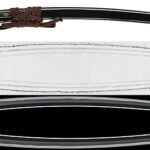 Katana:Mumei (attributed to Yoshimitsu)(50th NBTHK Juyo Token)
Katana:Mumei (attributed to Yoshimitsu)(50th NBTHK Juyo Token)
 Katana:Mumei (Unsigned) [Attributed to Enju] (19th NBTHK Juyo Token)
Katana:Mumei (Unsigned) [Attributed to Enju] (19th NBTHK Juyo Token)
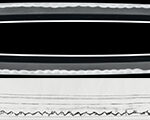 Katana: Mumei (Attributed to Osafune Motomitsu)(NBTHK Tokubetsu Hozon Token)
Katana: Mumei (Attributed to Osafune Motomitsu)(NBTHK Tokubetsu Hozon Token)
 Katana:Mumei (attributed to Shigezane)(35th NBTHK Juyo Token)
Katana:Mumei (attributed to Shigezane)(35th NBTHK Juyo Token)
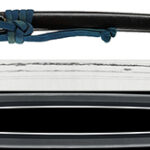 Katana: Mumei (attributed to Ryumon)(NBTHK Tokubetsu Hozon Token)
Katana: Mumei (attributed to Ryumon)(NBTHK Tokubetsu Hozon Token)
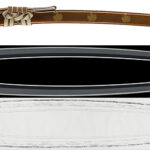 Katana: Nobutsugu(Aoe)(65th NBTHK Juyo Token)
Katana: Nobutsugu(Aoe)(65th NBTHK Juyo Token)




